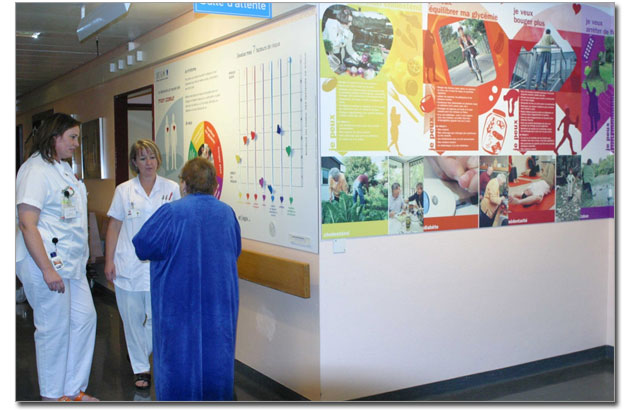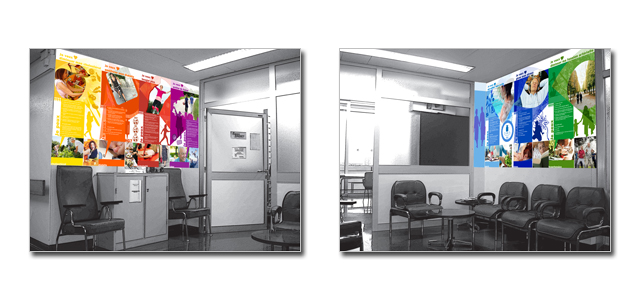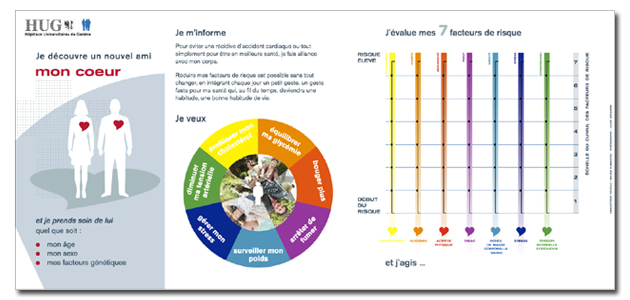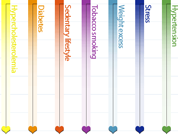A useful tool: the wall chart
In order to liven up the health provider-patient interview, the Geneva University Hospitals has created a wall chart aimed at informing and increasing patient’s awareness of cardiovascular risk factors.
The wall chart – which is composed of colourful pictograms and pictures of people at different ages – is displayed in the waiting room area or in a resting area and is over 10 metres long. Its aim is to address patients’ concerns about their health and to encourage them to think about how best to use their own resources to improve it.


The wall chart provides information which is easy to understand, attractive and fun: it is based around seven modifiable risk factors, each portrayed by one of the colors of the rainbow.
In order to captivate attention, the wall chart provides mobile scales of risk factors: the patient positions cursors on the scale and decides on which risk factor s/he is ready to act on with a particular lifestyle modification. For example s/he may decide to increase his/her physical activity.

The patient can also be accompanied to the wall chart by a health care provider. The latter may help with the identification of his/her risk factors and encourage the patient to focus on what s/he can do to reduce the risk. The patient decides to act and develops a relationship with the health care provider that may help him/her to better handle lifestyle modifications when s/he returns home.
In this manner, the health care provider changes from having an intervention role to the role of a facilitator, rescinding responsibility of the medical condition to the patient.
Leaflets explaining each of the seven risk factors are available.
The wall chart represents a source of information for the prevention of cardiovascular disease and, being more than just a tool, it has become a place to share between the health care provider and the patient.

